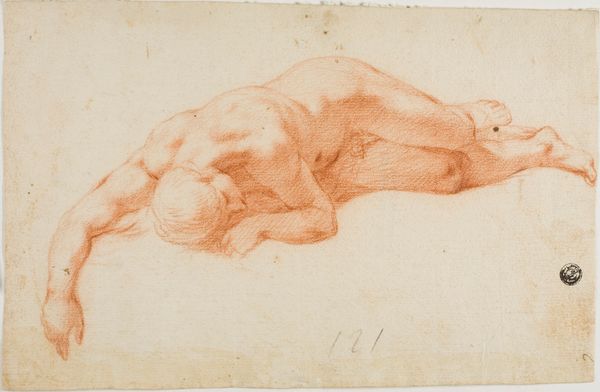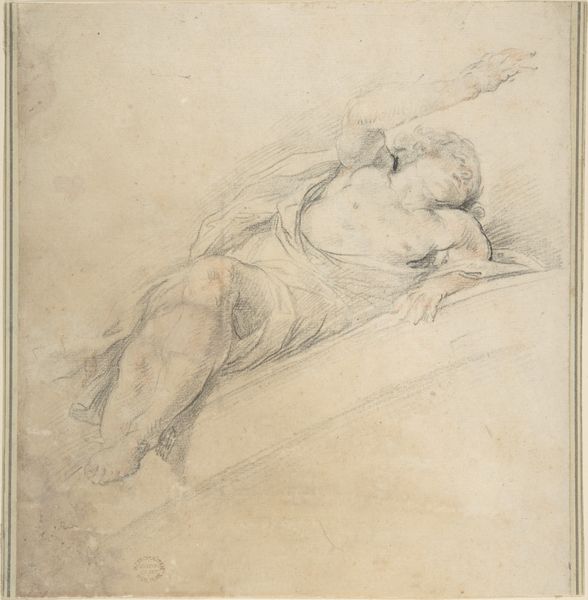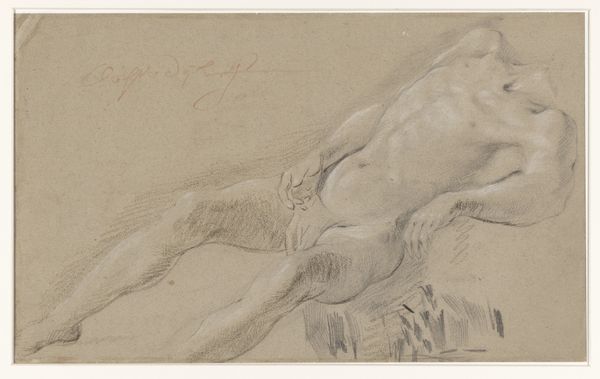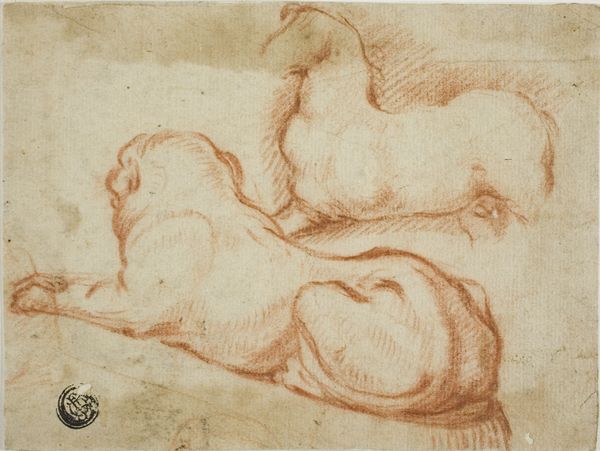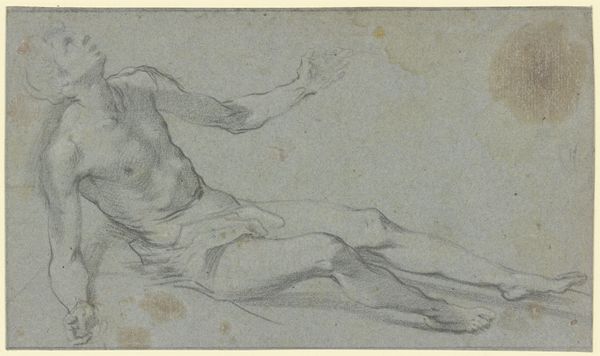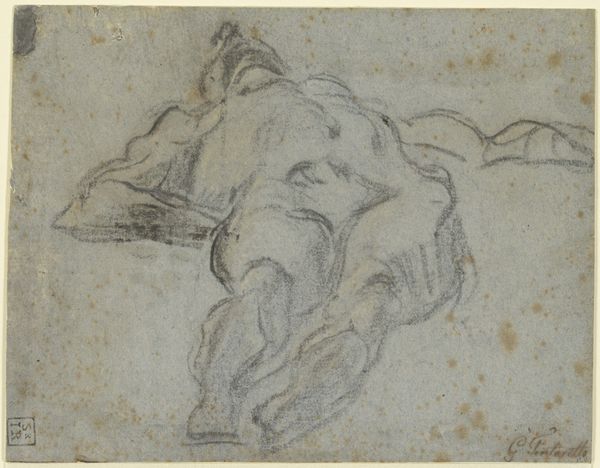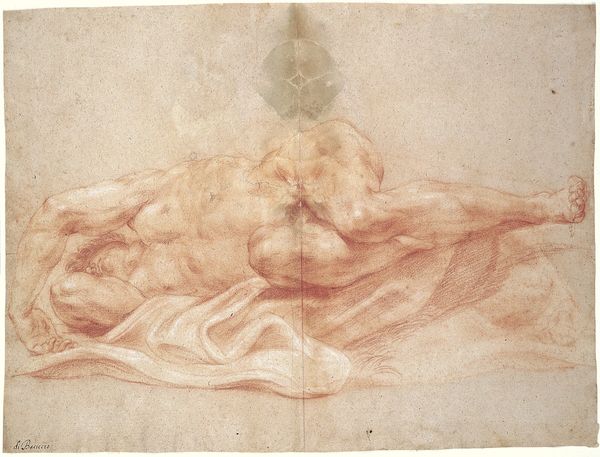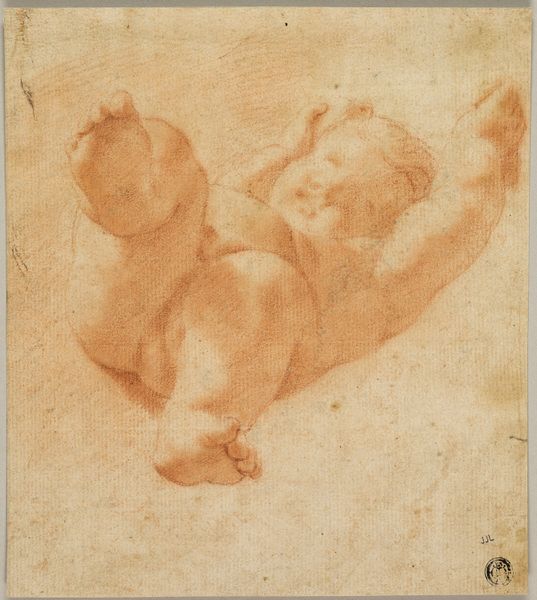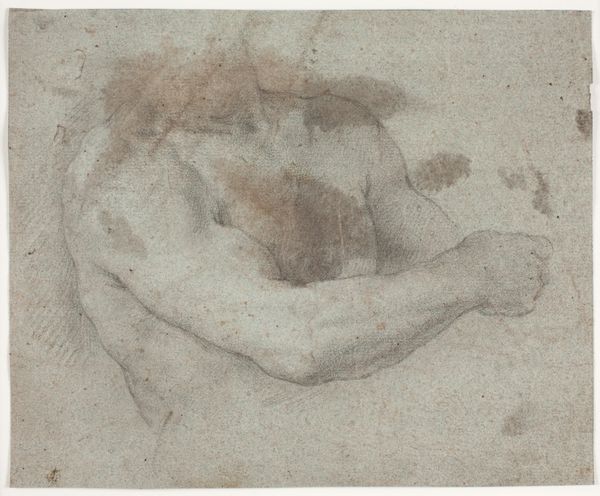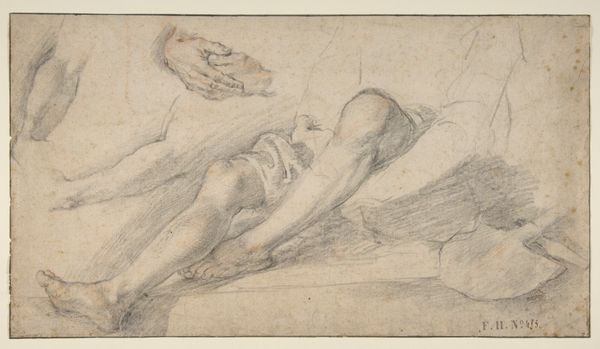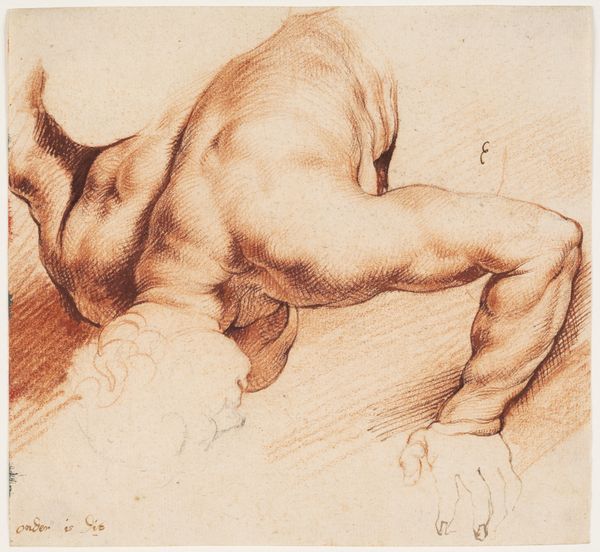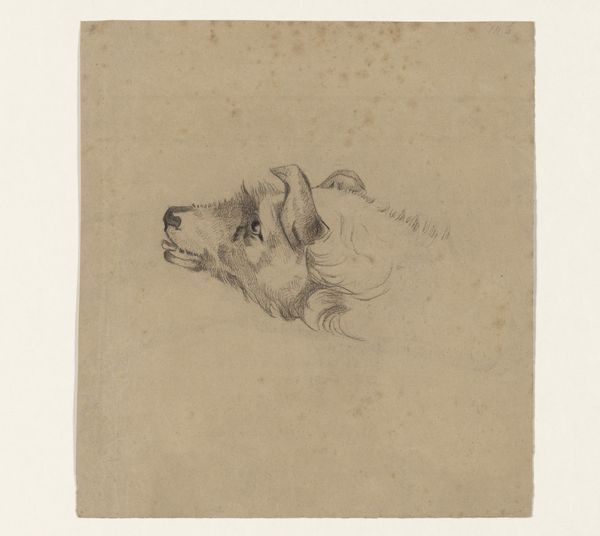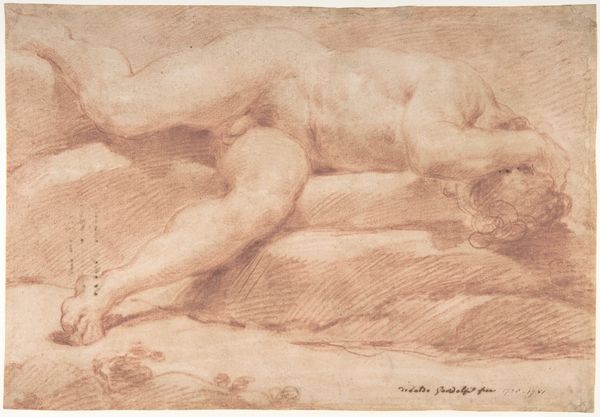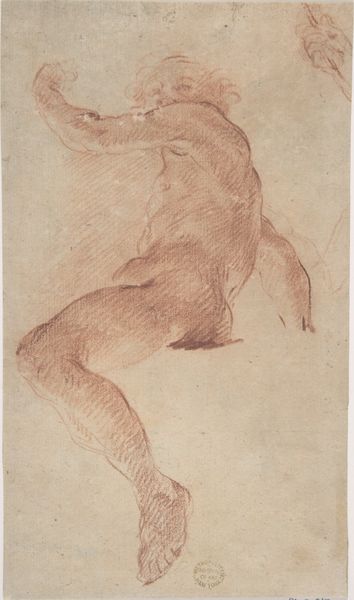
drawing
#
drawing
#
water colours
#
figuration
#
11_renaissance
#
italian-renaissance
#
nude
Dimensions: 2 15/16 x 4 1/4 in. (7.5 x 10.8 cm)
Copyright: Public Domain
Editor: This is Correggio's "Recumbent Nude," dating roughly from 1600 to 1635. It's currently at the Metropolitan Museum of Art, and it’s made using watercolours. The figure seems unfinished, almost ethereal. What strikes you when you look at this drawing? Curator: I’m immediately drawn to the physical act of creation here. Consider the paper, likely a valuable commodity, and the labor involved in its production. Watercolours too, while seemingly simple, require a sophisticated understanding of pigment sourcing and mixing. The layering of those thin washes speaks to a deliberate process. Was this sketch for a larger commission or a purely private exploration for the artist? How might its purpose impact our interpretation of its seemingly unfinished state? Editor: That's interesting. I hadn’t really thought about the materials themselves having so much importance in Renaissance art. So, it's not just *what* is depicted, but the resources used in depiction. Curator: Precisely. The "nude" as a subject is complicated in the Renaissance because it speaks of commodity and access to bodies and also speaks of patronage. Ask yourself how a focus on Correggio’s drawing materials, techniques, and purpose disrupts traditional art historical narratives that celebrate only artistic genius and beauty, while sometimes overshadowing labour? Editor: So, the raw materials themselves speak of the economic realities of art making? Curator: Indeed! Watercolors might allow more nimble movement, enabling freedom of design, and broader sales. In this way we acknowledge what underpinned cultural capital at the time. Even the unfinished quality implies potential production and further commercial exchange. Editor: It's fascinating to consider the artwork through that lens, beyond just its aesthetic qualities. I will rethink everything I knew of Renaissance! Curator: Excellent! Approaching art history with a materialist eye forces us to ask different questions, leading to richer, more nuanced understandings.
Comments
No comments
Be the first to comment and join the conversation on the ultimate creative platform.
